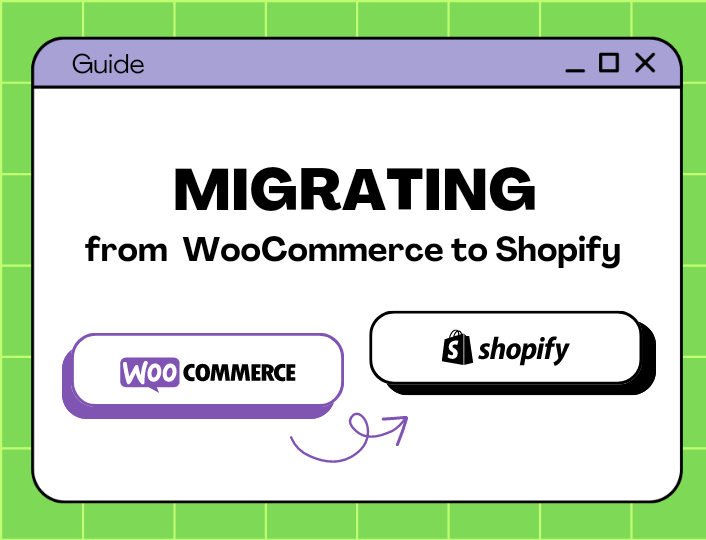Order fulfillment is a crucial part of every e-commerce business. Your approach to it can make or mar your business growth.
If you run a Shopify store, understanding the nitty-gritty of order fulfillment on Shopify can influence the trajectory of your business.
In this article, we will discuss all you need to know about fulfilling orders, its importance, order fulfillment strategies, and factors to consider when choosing a fulfillment strategy.
Let’s get right into it.
What is Order Fulfillment?
Order fulfillment refers to the entire process of getting a product to the customer after they purchase online. These processes include receiving, processing, and delivering products.


Efficient order fulfillment is crucial to boost customer satisfaction and retention. It involves a series of steps from the moment an order is placed to the point of successful delivery to the customer.
The order fulfillment routes include the following stages:
- Order Processing: This is the first step toward fulfilling orders. It involves receiving customer orders, verifying product availability, and collecting necessary order details. While processing orders, you don’t want to mistake details such as product type, quantity, payment information, and payment information.
- Inventory Management: This involves checking inventory levels to ensure that the products are in stock and available for fulfillment.
- Picking and Packing: Once the products for an order are confirmed as available, the fulfillment team proceeds to pick up the items from the warehouse. The items are verified and labeled. The team creates an invoice and packs the products for shipping.
- Shipping and Delivery: Orders are passed to the shipping carrier or logistics provider for transportation. This stage involves generating shipping labels, shipping out orders, and tracking the package until it reaches the customer’s location.
- Order Tracking and Communication: Customers expect updates on the status of their orders. An order tracking system allows customers to monitor the progress of their shipments and address any issue that may arise while the package is still in transit.
- Returns and Exchanges: This involves handling returned items, processing refunds or exchanges, and updating inventory accordingly. In some cases, customers may want to return or exchange products. This is where an effective order fulfillment process comes in.
Importance of Order Fulfillment on Shopify?
As a Shopify business owner, implementing the right order fulfillment strategy will benefit your business in the following ways;
Reduce Overhead Cost
Third-party order fulfillment service providers can help reduce your business’ overhead cost. Using a 3PL service provider may attract additional charges. However, when compared to the cost of single-handedly fulfilling your orders, outsourcing is a better deal.
Boost Your Business Scalability
Outsourcing your order fulfillment routes to a third party, such as the Shopify Fulfillment Network, or simply automating the process, gives you more time to focus on what is important. You can concentrate on discovering new ways to scale your business without overstretching yourself.
Improve Customer Service
Typically, many online shoppers want their orders delivered to them almost immediately. About 41% of shoppers worldwide say they expect to receive their order within 24 hours. Considering the stages involved in getting a product across to the customer, fulfilling orders accurately and on time is a great way to improve your customer experience.
Improve Customer Retention
When you offer your customers what they need, such as timely and accurate order fulfillment, you increase your chances of retaining more customers. Increasing your Shopify customer retention rate by as little as 5% can raise your ROI up to 29%.
Order Fulfillment Strategies on Shopify
Taking orders on Shopify is one thing, fulfilling them is another. Here are the major order fulfillment methods available to Shopify;
Self-Fulfillment
Self-fulfillment is exactly what the name implies; handling all stages involved in fulfilling orders on Shopify yourself. This strategy allows merchants can manually process orders through their Shopify dashboard or integrate with third-party shipping software for more streamlined operations.
Dropshipping
Dropshipping is a fulfillment method where sellers partner with suppliers or wholesalers who handle the inventory and shipping. All the seller has to do is take the order. So, when a customer places an order on the merchant’s Shopify store, the supplier gets notified, and they directly ship the products to the customer. Dropshipping is the perfect option for merchants who do not want to stock inventory or handle shipping logistics.
Third-Party Logistics (3PL) Providers
Shopify integrates with various third-party logistics providers that specialize in order fulfillment. As a Shopify merchant, you can take advantage of this option to outsource your order fulfillment on Shopify and let these companies handle the order processing, picking, packing, shipping, and tracking on your behalf.
Shopify Fulfillment Network
Shopify offers its own fulfillment network called the Shopify Fulfillment Network (SFN). SFN has multiple fulfillment centers across the globe that handle inventory storage, order fulfillment, and shipping for merchants. Merchants can send their inventory to SFN when customers place orders, the fulfillment centers will pick, pack, and ship the products to customers.
Factors to Consider When Choosing an Order Fulfillment Strategy
There are several factors to consider when choosing an order fulfillment strategy to ensure alignment with business goals and customers’ expectations. They include:
- Product characteristics: Consider the specific characteristics of your products, such as size, weight, fragility, and perishability. Fragile and perishable products will require careful handling to prevent them from getting damaged along the line.
- Location and Shipping Zones: Analyze your customer base and geographic distribution. Consider the proximity of your fulfillment centers to your customers to minimize shipping distances and reduce transit times. This analysis will help determine if a centralized or decentralized fulfillment strategy is more appropriate.
- Order fulfillment cost: Check the costs associated with different fulfillment strategies such as warehousing, packaging materials, labor, shipping, and returns processing before making a choice. Compare the costs of in-house fulfillment versus outsourcing to third-party logistics providers (3PLs). Determine the most cost-effective option for your business.
- Growth Potential: Ensure that whichever fulfillment you choose has the potential to accommodate your business as it scales. Consider whether the strategy allows for easy expansion into new markets or regions.
- Technology and Integration: Find out the necessary technology or software each strategy may require to function. This could include order management systems, inventory management software, warehouse management systems, and integration capabilities with e-commerce platforms and marketplaces.
- Delivery speed: Speed of delivery informs your customers’ evaluation of being satisfied. Endeavor to choose a fulfillment strategy that promises prompt delivery of orders to your customers.
Factors to consider when choosing an Order Fulfillment Service
There are several factors to consider when choosing a fulfillment service provider. These factors will help you choose the best fit for your business.
- Inventory management
- Fulfillment process
- Compatibility with Shopify
- Scalability
- Customer service
With these factors in mind, you can pick the best third-party order fulfillment service provider for your business. To help make the selection process even easier, we have compiled a list of the top 10 third-party logistic service providers for you.
Conclusion.
Understanding how order fulfillment on Shopify works is a great way to improve your business performance. It can help increase customer retention, which is essential for continuous growth.
But understanding this process is only one part of business growth. Increasing conversion by converting your store visitors to paying customers is another. This is where we come in. Adoric can help you get more value from your Shopify website traffic.
Why not contact us to learn more about Adoric’s conversion features?




